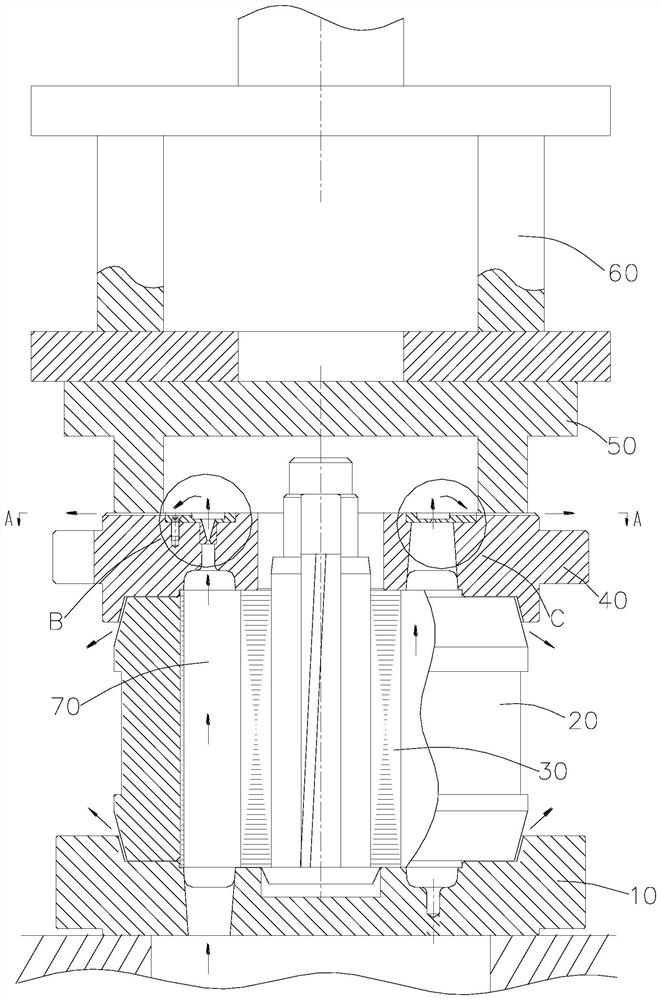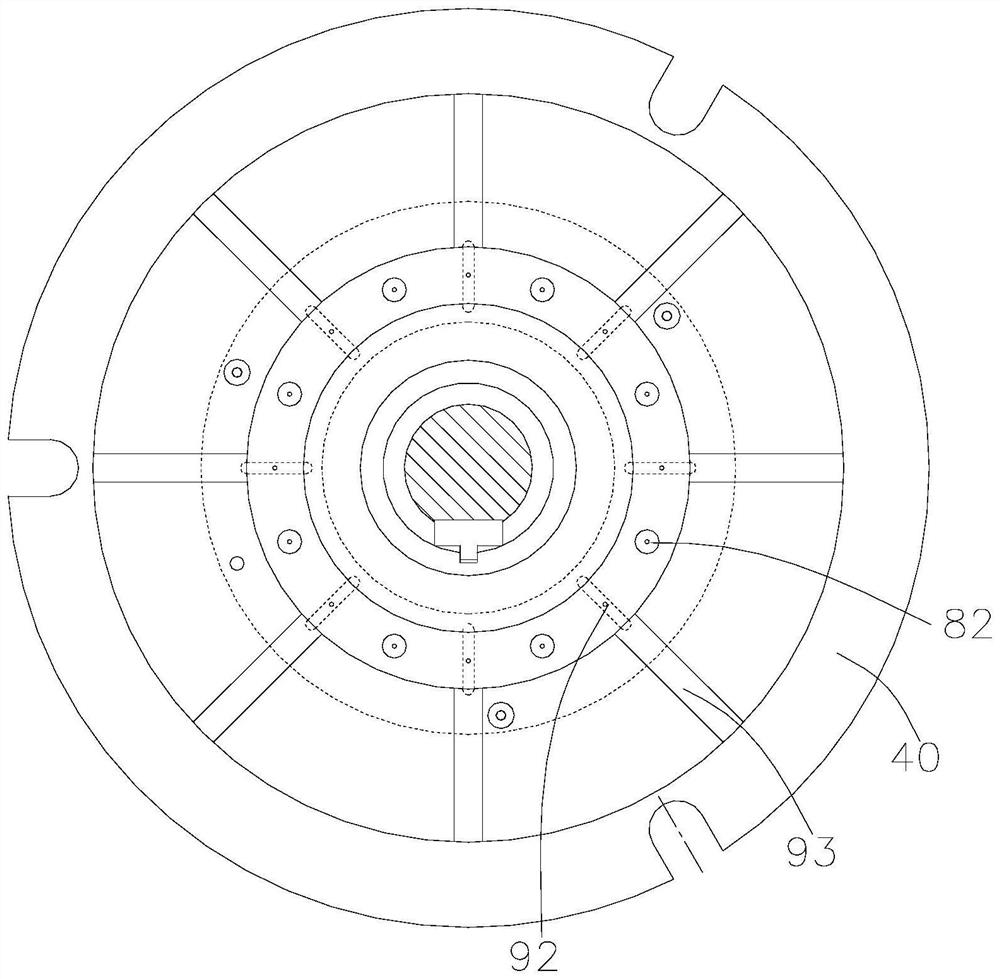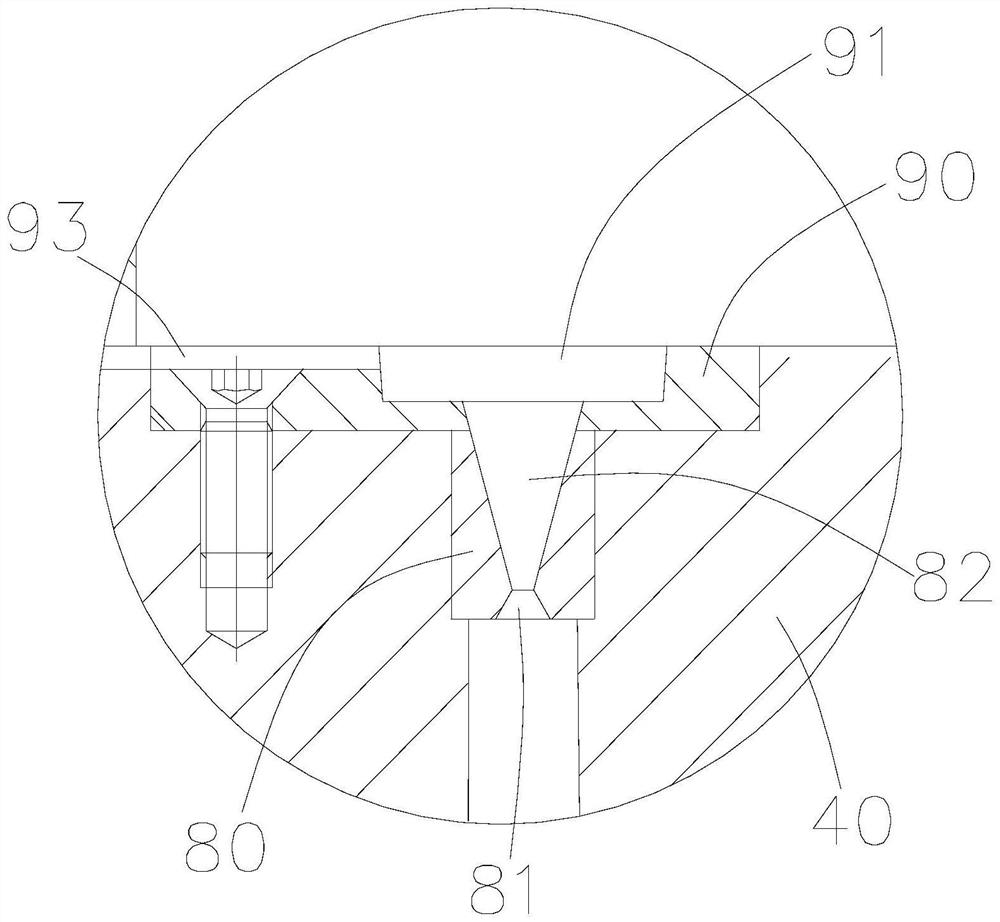Die-casting mold for squirrel-cage motor rotor
A technology for motor rotors and die-casting molds, applied in the manufacture of squirrel cage rotors, stator/rotor bodies, etc., can solve the problems of low labor intensity, reduced motor efficiency, hidden dangers of motor performance efficiency, etc., to reduce labor intensity and improve production efficiency. Effect
- Summary
- Abstract
- Description
- Claims
- Application Information
AI Technical Summary
Problems solved by technology
Method used
Image
Examples
Embodiment Construction
[0025] The following will clearly and completely describe the technical solutions in the embodiments of the present invention with reference to the accompanying drawings in the embodiments of the present invention. Obviously, the described embodiments are only some, not all, embodiments of the present invention. Based on the embodiments of the present invention, all other embodiments obtained by persons of ordinary skill in the art without making creative efforts belong to the protection scope of the present invention.
[0026] It should be noted that when a component is said to be “fixed” to another component, it may be directly on the other component or there may be another intermediate component through which it is fixed. When a component is said to be "connected" to another component, it may be directly connected to the other component or there may be another intermediate component at the same time. When a component is said to be "set on" another component, it may be set d...
PUM
| Property | Measurement | Unit |
|---|---|---|
| diameter | aaaaa | aaaaa |
| height | aaaaa | aaaaa |
Abstract
Description
Claims
Application Information
 Login to View More
Login to View More - R&D
- Intellectual Property
- Life Sciences
- Materials
- Tech Scout
- Unparalleled Data Quality
- Higher Quality Content
- 60% Fewer Hallucinations
Browse by: Latest US Patents, China's latest patents, Technical Efficacy Thesaurus, Application Domain, Technology Topic, Popular Technical Reports.
© 2025 PatSnap. All rights reserved.Legal|Privacy policy|Modern Slavery Act Transparency Statement|Sitemap|About US| Contact US: help@patsnap.com



